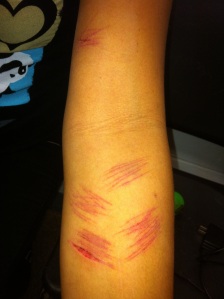Taking a Closer Look at ADHD
Attention Deficit/Hyper Activity Disorder (ADHD) is defined in the Diagnostic and Statistical Manual IV (DSM IV) as a composite disorder including two major syndromes which are inattentive and hyperactivity-impulsivity which may occur independently, starting before the age of 7 and cause some impairment in two or more settings (i.e. home and school).
Types of ADHD
The DSM goes on to break the diagnosis down to four types:
- Attention-Deficit/Hyperactivity Disorder; Predominately Inattentive Type
- Attention-Deficit/Hyperactivity Disorder: Predominately Hyperactive-Impulsive Type
- Attention-Deficit/Hyperactivity Disorder; Combined Type
- Attention-Deficit/Hyperactivity Disorder Not Otherwise Specified
The diagnostic criteria for ADHD is fairly broad. Most of us at some point and time could theoretically meet the criteria for ADHD which brings me to the reason for this post. Is ADHD a real disorder?
Controversy
ADHD has been a controversial disorder since the 1970s. Most of the controversy surrounds the questions of over diagnosing the disorder, using stimulants such as Ritlan, Adderal and Tenex (which are chemically similar to illegal drugs such as Speed and Cocaine) to treat the disorder, especially in children and even over diagnosing the disorder in minorities and poor people for financial gain (we’ll explore this in another post). Common side effects we know from using stimulants include:
- Psychosis
- Addiction
- Nervousness including agitation, anxiety and irritability
- Trouble Sleeping
- Decreased appetite
- Headache
- Stomach ache
- Nausea
- Dizziness
- Heart Palpitations
- Slowing growth in children
- Seizures
- eyesight changes or blurred vision
These are all serious side effects that need to be taken into consideration when prescribing stimulants to anyone, especially children, but often these things are ignored in the medicalization of deviant behavior.
Most healthcare providers in America recognize ADHD as a legitimate disorder, although in the United Kingdom the disorder isn’t as quickly diagnosed or treated with stimulants due to no one really knowing the long-term effects of using these stimulants due to there not having been any long-term studies on them.
I personally believe that ADHD is a real diagnosis. I’ve diagnosis children as well as adults with ADHD and feel confident in my diagnosis. I currently work with three teenagers who I have diagnosed with ADHD and none of them are on medication although they are prescribed medication. In there cases, I personally believe that medication would benefit because when they aren’t on their medication they don’t seem to be in control of themselves and their grades and behavior suffer. However, I have evaluated nearly one hundred students this year for ADHD and I’ve only diagnosed three. The others have some signs of ADHD, but I truly believed that most of their “deviant behavior” stems from a poor educational system and poor parenting. I do feel like it is over-diagnosed and over-medicated.
A lot of the signs and symptoms of ADHD are just children being children, products of their environment, poor parenting and poor educational systems. Not everyone who meets criteria for the disorder should actually be diagnosed and then subsequently medicated with stimulants which can cause undesirable side effects.
If you have a child you think may have ADHD then get them evaluated by a school psychologist or another qualified healthcare/mental health provider. If your child is diagnosed with ADHD, see about natural remedies such as changes in diet, vitamins, supplements and cognitive behavioral treatments. WebMD has a good page on some Home Remedies to help with ADHD. Always question your healthcare provider before just taking the prescription for stimulants and getting it filled. Ask about non-stimulant medication such as Strattera and other alternative medications if medication is recommended. Always educate yourself, your child and your family and be active members of you and your child’s mental and physical health.


